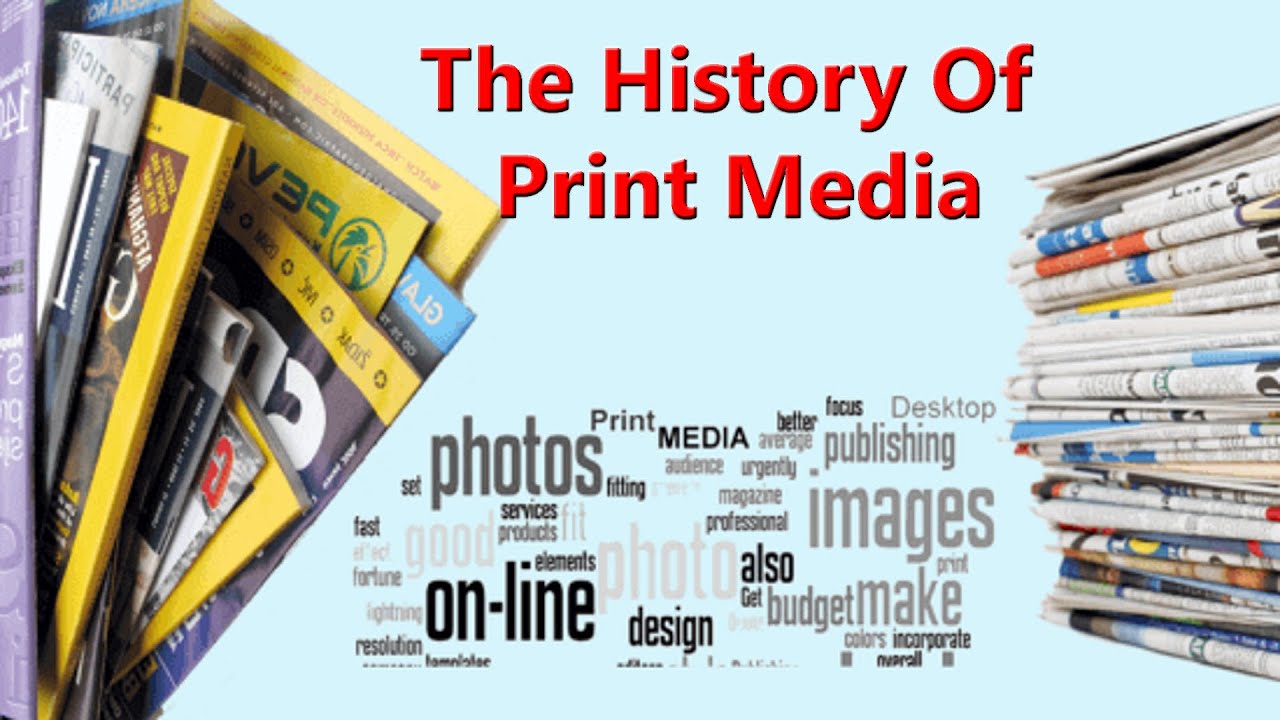- Ads are scarce, search and social traffic is dying, and readers are burned out. The future will require fundamentally rethinking the Press’s relationship to its audience
By Clare Malone, The New Yorker, February 10, 2024
My first job in media was as an assistant at The American Prospect, a small political magazine in Washington, D.C., that offered a promising foothold in journalism. I helped with the print order, mailed checks to writers—after receiving lots of e-mails asking, politely, Where is my money?—and ran the intern program. This last responsibility allowed me a small joy: every couple of weeks, a respected journalist would come into the office for a brown-bag lunch in our conference room, giving our most recent group of twentysomethings a chance to ask for practical advice about “making it.” One man told us to embrace a kind of youthful workaholism, before we became encumbered by kids and families. An investigative reporter implored us to file our taxes and to keep our personal lives in order—never give the rich and powerful a way to undercut your journalism. But perhaps the most memorable piece of advice was from a late-career writer who didn’t mince words. You want to make it in journalism, he said? Marry rich. We laughed. He didn’t.
I’ve thought a lot about that advice in the past year. A report that tracked layoffs in the industry in 2023 recorded twenty-six hundred and eighty-one in broadcast, print, and digital news media. NBC News, Vox Media, Vice News, Business Insider, Spotify, theSkimm, FiveThirtyEight, The Athletic, and Condé Nast—the publisher of The New Yorker—all made significant layoffs. BuzzFeed News closed, as did Gawker. The Washington Post, which lost about a hundred million dollars last year, offered buyouts to two hundred and forty employees. In just the first month of 2024, Condé Nast laid off a significant number of Pitchfork’s staff and folded the outlet into GQ; the Los Angeles Times laid off at least a hundred and fifteen workers (their union called it “the big one”); Time cut fifteen per cent of its union-represented editorial staff; the Wall Street Journal slashed positions at its D.C. bureau; and Sports Illustrated, which had been weathering a scandal for publishing A.I.-generated stories, laid off much of its staff as well. One journalist recently cancelled a networking phone call with me, writing, “I’ve decided to officially take my career in a different direction.” There wasn’t much I could say to counter that conclusion; it was perfectly logical.
“Publishers, brace yourselves—it’s going to be a wild ride,” Matthew Goldstein, a media consultant, wrote in a January newsletter. “I see a potential extinction-level event in the future.” Some of the forces cited by Goldstein were already well known: consumers are burned out by the news, and social-media sites have moved away from promoting news articles. But Goldstein also pointed to Google’s rollout of A.I.-integrated search, which answers user queries within the Google interface, rather than referring them to outside Web sites, as a major factor in this coming extinction. According to a recent Wall Street Journal analysis, Google generates close to forty per cent of traffic across digital media. Brands with strong home-page traffic will likely be less affected, Goldstein wrote—places like Yahoo, the Wall Street Journal, the New York Times, the Daily Mail, CNN, the Washington Post, and Fox News. But Web sites that aren’t as frequently typed into browsers need to “contemplate drastic measures, possibly halving their brand portfolios.”
What will emerge in the wake of mass extinction, Brian Morrissey, another media analyst, recently wrote in his newsletter, “The Rebooting,” is “a different industry, leaner and diminished, often serving as a front operation to other businesses,” such as events, e-commerce, and sponsored content. In fact, he told me, what we are witnessing is nothing less than the end of the mass-media era. “This is a delayed reaction to the commercial Internet itself,” he said. “I don’t know if anything could have been done differently.”
During the first three decades of digital publishing, the news media constantly reshaped itself to keep up. Blogging and aggregation, neither of which involved much expense in terms of original reporting, quickly became the strategy for chasing news on the Internet. Playing the search-engine-optimization game—racing to get an article within the first page of Google results—insured that your Web site got page views. And page views were what mattered: they were a new way of selling advertising. Gawker, which launched in 2002, famously had an office leaderboard that showed which writer had the best-trafficked story; bonuses were tied to views. But the Internet’s exponential growth only depreciated the value of clicks. By 2008, Gawker was getting half the revenue per page of what it earned in 2004. The model was, the financial journalist Felix Salmon wrote, in 2010, “looking increasingly like a race to the bottom, where publishers desperately try every trick in the book to boost their pageviews and ad impressions, just to compensate for the fact that their revenues per page are very small. The results—sensationalism, salaciousness, and slideshows—only serve to further erode the value of the sites in the eyes of advertisers.”
Digital media continued to chase traffic, though. BuzzFeed was one of the sites that defined the industry, tailoring content to go viral on various social-media giants, such as Facebook, Twitter, and YouTube. In 2011, the site launched BuzzFeed News, a play for greater prestige that, in some sense, worked: a decade later, the site won a Pulitzer Prize. But BuzzFeed News stories, like most BuzzFeed content, were available for free. When the venture capitalist Marc Andreessen’s firm gave BuzzFeed a fifty-million-dollar cash infusion, in 2014, he told the company to worry about growth, not revenue. But ceding distribution to outside tech firms hastened much of the industry’s downfall. “Even as Buzzfeed reached more and more people on platforms like YouTube and Snapchat, traffic seemed to be losing value at the same rate,” Ben Smith, the former editor-in-chief of BuzzFeed News, wrote in his 2023 book, “Traffic.” “When it came to traffic, there was too much of it out there, and Facebook and Google were too good at selling theirs directly to advertisers.”
Last April, Jonah Peretti, one of BuzzFeed’s co-founders, shuttered BuzzFeed News, and published a memo about the way forward for his company and others like it, including HuffPost, which he still owns. “The vast majority of people will increasingly want social media platforms to provide an escape where they can find entertainment, joy, and fun,” Peretti wrote. “This will drive a return to the editorially curated news homepage like HuffPost, Drudge, and CNN.com.” Direct traffic to sites with strong audiences and reputations would be the future.
And yet, a few weeks later, Jimmy Finkelstein, the former owner of The Hill, launched a new ad-supported site, The Messenger. The idea was to create an alternative to the mainstream national media, which Finkelstein, who is seventy-four, viewed as increasingly partisan. “I remember an era where you’d sit by the TV, when I was a kid with my family, and we’d all watch ‘60 Minutes’ together,” he told the Times. “Those days are over, and the fact is, I want to help bring those days back.” The site hired hundreds of journalists, and promised to cover sports, politics, and entertainment. Executives said that they expected a hundred million monthly visitors and to generate a hundred million dollars in a year, mostly through advertising. The endeavor lasted less than a year; Finkelstein abruptly dissolved The Messenger in January, pulled down the Web site, and left his employees without severance or health care. The ordeal demonstrated the media’s poverty of ideas for how to survive without robust advertising; the past two years have seen steady drops in ad revenue across the industry, even as tech companies somewhat recovered. “No one who knew anything would think you can make money off traffic and hit the dumbass numbers he put out there,” Jim VandeHei, the co-founder of Axios and Politico, told the news site Puck in the aftermath. “I was pissed the moment I heard about this dumb idea. It was business malpractice and human cruelty at an epic scale.”
Donald Trump’s Presidency was a boon to some news outlets, particularly the Times and the Washington Post, which were engaged in an arms race to get the most explosive scoops. The Times gained five million digital subscribers during Trump’s four years in office, and the Post gained two million. As the President railed against the media and levels of trust in the industry plummeted—polls show that about two-thirds of the country now has little to no trust in the media—these numbers were signs of hope. But the “Trump bump” proved to be a momentary reprieve from a sustained and inevitable decline. In 2021, the first year of Joe Biden’s Presidency, the Post, which is owned by Jeff Bezos, lost about three hundred thousand subscribers. The Los Angeles Times, which is owned by the billionaire Patrick Soon-Shiong, reported an increase in digital subscribers in the summer of 2023, but it was about half a million short of Soon-Shiong’s stated goal of a million digital subscribers; the paper laid off seventy-four staffers that summer, a prelude to this January’s deeper cuts.
Arguably, many of the factors that have hampered national outlets have been devastating local newsrooms for decades. The Times launched its Web site in 1996, promising “to extend the newspaper’s reach and create new editorial and business opportunities in electronic media.” As part of that effort, a “thoughtful, unbiased filter”—with “a powerful but user-friendly search function”—would amplify its classified offerings nationwide. By then, Craigslist had begun its takeover of newspapers’ classifieds revenue; by the mid-two-thousands, newspapers were losing money on an Internet where information was increasingly free and ads had moved elsewhere. The Times lost five hundred and forty-three million dollars in 2006. A couple of years later, the company borrowed some two hundred and twenty-five million dollars against its recently completed Times Square building. Only after launching a paywall, in 2011, did it find a path back to prosperity. But papers serving smaller markets never rebounded: between 2005 and 2024, roughly three thousand newspapers in the U.S. have closed. According to the Bureau of Labor Statistics, newspapers lost more than forty thousand staffers during the same period. Two hundred and four counties in the U.S. now have no local news—high-poverty areas are most affected—and, by the end of this year, it’s expected that the U.S. will have lost a third of its newspapers. Meanwhile, Craigslist’s founder, Craig Newmark, now funds a journalism school that recently announced its intention to go tuition-free, a move reminiscent of the explosives manufacturer Alfred Nobel’s impulse to fund a peace prize.
The decline of local news was, many theorized, part of the reason that Trump, with his misinformation-strewn campaign, could gain purchase to begin with. (Some evidence suggests that, as consumers rely on national outlets, their political polarization increases.) But places like the Washington Post and the Los Angeles Times now face similar crises: How does a newspaper make money in 2024? People looking to answer that question invariably turn toward the New York Times. At the end of last year, as scores of journalists were getting their pink slips, the paper announced that it had passed ten million total subscribers.
In addition to consistently publishing very good journalism, the Times has a robust cooking app, a series of popular games, and the product-review site Wirecutter. It is not so much a newspaper as a digital life-style brand. Both the Washington Post and the Los Angeles Times have made efforts to expand their non-news offerings—the Post beefed up its health section and the L.A. Times leaned into food coverage and around-the-town entertainment guides. But, even as outlets have tried to complement news coverage with other offerings, they’ve faced a fresh dilemma: news subscriptions—the great hope of media—are now directly competing with entertainment ones. The Reuters Institute for the Study of Journalism released a report in 2023 that found respondents often weighed their renewal of news subscriptions against digital streaming services. “We have Disney+, Hulu, Netflix, Amazon Prime, currently HBO Max and Spotify, Kocowa, and BritBox,” one survey respondent said. “I used to have The Washington Post but it got too expensive to have all the subscriptions.” Another said news was “as important as anything, but if I were to cut one, I would first think of cutting my news subscription before any other.”
Cable television’s problems are similarly acute, but with some variation: the cable bundle is dying thanks to the online-streaming business. In a world with fewer cable boxes, CNN will likely need to figure out how to turn its well-trafficked Web site into a compelling news hub. Mark Thompson, CNN’s new C.E.O. and editor-in-chief, wrote a lengthy memo to staff, in January, outlining the company’s turn toward digital products and subscriptions. He was light on specifics, if not the vibe. “We need to recapture some of the swagger and innovation of the early CNN,” he wrote. “It’s time for a new revolution.” At the same time, he told the Wall Street Journal, “I’m not even sure that subscription is the right pathway for CNN. But I do think we need to start experimenting and exploring in the broader sense direct-to-consumer relationships and potentially direct-to-consumer paying relationships.” Not quite a subscription model, but not not a subscription model?
The Washington Post’s new publisher and C.E.O., Will Lewis, was more clearly bearish on subscriptions when he recently sat down with Semafor. “That subscription-based model is now waning and then will enter a more significant period of decline,” he said. “There’s very positive evidence of how news can be accessed and paid for in more innovative ways. There are day passes that are successful, there’s week passes, there are models like the Guardian where you can make donations. So there’s a whole new generation of paying user concepts. I’m pretty excited about it. I think it’s newsroom 3.0.”
But the fact that the Times seems to have perfected a life-style-cum-news formulation also means that it’s tougher for other outlets to gain an edge with readers. There are some clever niches. Politico, Axios, and Punchbowl, for instance, cater to the needs of insider audiences, with expensive subscription components aimed at businesses willing to foot the bill for their employees. Reporting the news well is, by itself, no longer a profitable business proposition, which is too bad given that it’s an election year and one of the major-party candidates faces federal charges for interfering with an election. “The New York Times is in some ways the great hope but, in some ways, it’s the villain,” Morrissey, the media analyst, said. “There’s a few success cases in subscriptions, but, the reality is, very few publications can get more than five per cent of people to subscribe to them.”
Among the rank and file, there’s not a clear sense of what the next era of media might actually look like, besides having fewer journalists. “This shit is all dying,” the writer Jack Crosbie posted on his Substack in January. “There is like one place you can work right now with any kind of job security and it is The New York Times and that’s only because they have a shitload of recipes on a nicely coded little cooking app that you can subscribe to and also because your parents are hooked on Wordle.”
The layoffs at the L.A. Times seemed to throw the problem into sharp relief. “We are not in turmoil,” Soon-Shiong, the paper’s owner, said after laying off more than a hundred employees. “We have a real plan.” The newspaper’s union issued a pointed response, calling the cuts “the fruit of years of middling strategy,” and decried the paper’s lack of clear direction: “Our owner has publicly said he has a plan for moving forward but has not shared it with any of us.” A former Los Angeles Times executive I spoke with echoed that view: “Patrick never joined or conducted a structured business review with the executive team nor did he ever share an annual or quarterly operating or strategic plan with us.” (An L.A. Times spokesperson wrote in a statement that Soon-Shiong has “regularly” met with the senior executive team, and that it is the team that is “tasked with the strategic and operating plans for the business.”)
At Condé Nast, ninety-four unionized employees are on a layoff list, technically still employed as the union tries to barter to save jobs and increase severance packages; in January, roughly four hundred of its unionized workers walked off the job for a day. A few years earlier, the company had hired Agnes Chu, a former executive at Disney, to help expand its video offerings and shepherd its intellectual property into projects for streaming services. But the company struggled to find a sustainable business strategy, particularly as consumers gravitated toward short-form videos on TikTok, which aren’t particularly monetizable. Chu left the company last October. According to an e-mail that Condé Nast’s C.E.O., Roger Lynch, wrote in November, the company is now focussing on subscriptions and e-commerce as part of a plan to double consumer revenue.
Such a strategy reflects a fundamental shift in media: that it’s mostly consumers, not ads, who will need to pay for the services that outlets provide. Even supplemental revenue streams, such as concerts, literary festivals, and political talks, require a niche, devoted audience that is eager to engage with its favorite brands offscreen. Pitchfork had such an audience, which was part of what made Condé Nast’s decision so surprising to some. (Semafor reported that the move was part of a cost-cutting strategy, and that the company believes that Pitchfork “simply didn’t make enough money.”) “Every media company gutting their special interest brands will either watch helplessly or scramble to catch up in like 18 months,” Ryan Broderick, who writes a newsletter about the Internet, tweeted in the wake of the Pitchfork news. “Everything we know about Gen Z media consumption points to it being more niche.”
One school of thought holds that outlets should focus largely on improving the user experience of their existing subscribers. Making a site’s home page more personalized is one example. The former L.A. Times executive likened it to what Netflix does for its customers; outlets could help people sift through reams of stories, and find the ones they’ll be most interested in. Of course, that kind of increased algorithmic discretion would raise journalistic alarm bells, particularly at newspapers, where the editorial judgment of what makes the front page is core to newsroom culture. The Times has recently pushed for shorter articles, which is meant to “meet our readers where they are”—as is, presumably, its rolling blog-like coverage of major events. These formats also dumb the product down a bit. Then again, it wasn’t so long ago that journalists doing ad reads on podcasts was uncharted territory. Norms change, particularly when business is bad. “Netflix spends a billion dollars in R. & D.,” the former executive told me, largely on data scientists, engineers, and designers who help users discover content they’ll love. Newsrooms might also need to approach the problem in a more methodical, tech-driven manner.
Which brings us back to the spectre of A.I. Large language models have trawled through the vast archives of sites and trained themselves not just on reported information but on the original work of critics and the pithy takes of bloggers. Aggregation can already be easily automated. A.I. might soon be able to write a decent movie review or a piece of compelling fiction, and cheaply animate companion graphics for a TV news segment; it can do a passing job of many of these tasks already. But A.I. won’t be able to report out a scoop. Reporting still has singular value if outlets can figure out the right way to wring it out.
In the meantime, media outlets are looking to make A.I. companies pay them for their journalism. Late last year, the New York Times sued OpenAI and Microsoft for copyright infringement, arguing that the newspaper was owed “billions of dollars in statutory and actual damages” for “unlawful copying and use of The Times’s uniquely valuable works.” Before suing OpenAI, the Times was in talks with the company to license the paper’s content. Outlets like the Associated Press and Axel Springer—the parent company of Politico and Business Insider—have already struck such deals. The Axel Springer deal was reportedly worth “tens of millions” of euros, but The Information has reported that OpenAI had been offering some companies as little as a million dollars a year to license content.
Journalism requires a peculiar mix of skepticism and earnestness; as journalists, after all, we consider ourselves integral to the functioning of civic society, even if much of society doesn’t particularly like us. This breeds a funny mix of pugilism and sanctimony that can be, frankly, a little unlikable. Speaking recently on the “Print Is Dead. (Long Live Print!)” podcast, Tina Brown, a former editor of The New Yorker and Vanity Fair, compared members of the U.K. press with their American counterparts. “They see it as a job,” she said, of her fellow-Brits. “They don’t see it as a sacred calling, and I think there’s something to be said for that.”
The business models that will sustain journalism in the future won’t be perfect. They’ll leave people out who need good-quality news the most. They will probably cater to older, wealthier men who (for now) make up the demographic most likely to pay for news. There will be idiocy and the enablement of rich idiots. But there will also be new generations of journalists willing to leap into an unsteady industry because they think explaining the world around them is worthwhile, if not particularly remunerative. The sanctimony that Brown sniffs at certainly exists, but a little bit of the holy spirit is probably necessary to report on contemporary America. Even if past experience has taught journalists that change is often a destructive force, the crisis is here, and it needs solutions if we’re going to keep recommending, in good conscience, that promising young talent join the media’s ranks.
Many journalists working today have only ever been part of a culture of decline. Four months into my first job at The American Prospect, it had a fund-raising crisis and nearly closed. GQ sent a writer to chronicle the scene at one of our staff meetings, where the editor-in-chief talked about our post-termination health-care benefits. “There are appreciative, if not thrilled, murmurs of ‘awesome,’ from the group of mostly 20-somethings,” GQ reported. Twelve years later, it still feels like we’re all trying to outrun the cuts. A change of pace would be nice. Until then, scraps of hope will have to do: the journalist who’d taken her career “in a different direction” rescheduled our call.
Clare Malone is a Staff Writer at The New Yorker covering Media Business, Journalism, and Politics





